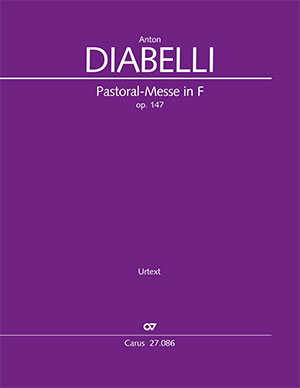Missa pro defunctis (Requiem)
The best-known setting of the Requiem Mass before Mozart’s unfinished work is by the celebrated opera composer Niccolò Jommelli. The Missa pro defunctis was composed in 1756, during Jommelli’s time as Kapellmeister at the court of the Württemberg Duke Carl Eugen, on the occasion of the death of the Dowager Duchess Maria Augusta. The work went on to enjoy wide circulation and numerous further performances. Jommelli composed it in the Neapolitan style, with orchestral forces of just strings and basso continuo. The simple but effective choral movements are partly contrapuntal in the stile antico, and partly with solo/tutti alternation and numerous suspended dissonances, whilst in the solo parts the opera composer can be recognized. This beautiful sounding Missa pro defunctis is now published for the first time in a critical edition. Where sections are missing in Jommelli’s composition, the Appendix contains settings by another composer from his circle, Nicola Sala.
- The best-known setting of the Requiem Mass before Mozart
- First critical edition
- Effective choral movements with numerous suspended dissonances and solo/tutti alternation
- Scored for small instrumental forces of strings and organ
-
Composer
Niccolò Jommelli
| 1714-1774
-
Editor
Julia Rosemeyer
-
Vocal score arranger
Harry Schröder
| 1956-2022
Reviews
Singende Kirche, Dezember 2023
Frequent questions about this work
Why is the “Te decet hymnus” in square brackets?
Do I need the Appendix?
 There are no questions and answers available so far or you were unable to find an answer to your specific question about this work? Then click here and send your specific questions to our Customer Services!
There are no questions and answers available so far or you were unable to find an answer to your specific question about this work? Then click here and send your specific questions to our Customer Services!









